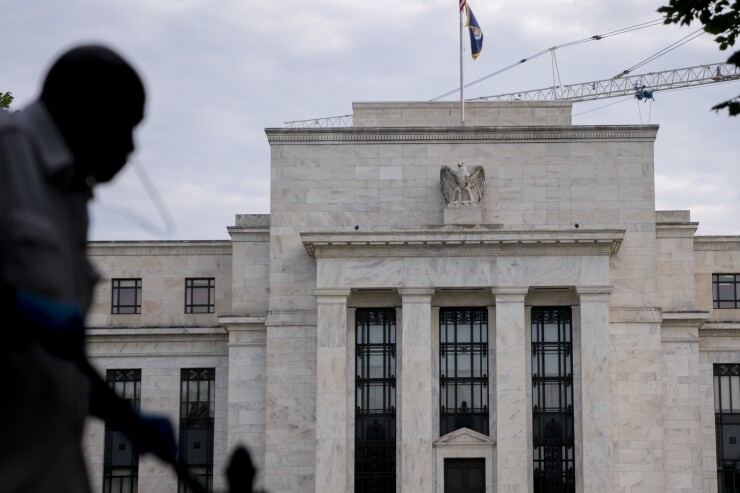The Federal Reserve warned major banks they could face consequences if they don’t wean off Libor fast enough.
The U.S. central bank told firms in
“Supervised firms that are not making adequate progress in transitioning away from Libor could create safety and soundness risks for themselves and for the financial system,” said Michael Gibson, director, division of supervision and regulation at the Fed. “Examiners should consider issuing supervisory findings and other supervisory actions if a firm is not ready to stop issuing Libor-based contracts by December 31, 2021.”

The Fed could potentially issue MRAs or MRIAs — matters requiring attention or matters requiring immediate attention — depending on the responses to its inquiries. These generally require a board-level reply including a timeline for corrective action. Investigations or enforcement action follow if the Fed isn’t satisfied.
The latest guidance could accelerate things, according to strategists at TD Securities in New York.
”The Fed is certainly aiming to light a fire under the market and encourage a faster transition toward alternatives,” said Gennadiy Goldberg, senior U.S. rates strategist at the firm.
Banks have less than a year before the Fed has indicated it
As the deadline approaches, the full complexity of the transition is still sinking in for some firms.
“With things people originally thought were super simple, like residential mortgages or vanilla, triple-A-rated corporate bonds, it’s now suddenly coming out of woodwork that there is a lot more customization in the documents than we thought,” said Lewis Liu, chief executive of Eigen Technologies Ltd., which works with banks on the transition. “It makes them more difficult to deal with.”
Most major banks will spend more than $100 million this year preparing, according to the accountancy firm Ernst & Young. Yet key challenges remain. Only a fraction of the $200 trillion derivatives market has shifted to the Secured Overnight Financing Rate, the officially favored successor to dollar Libor, while hundreds of billions of dollars of the most troublesome floating-rate notes and securitizations may be unable to transition at all.
The transition is picking up pace after global regulators
Last week’s announcement of Libor’s end dates “really started the clock ticking,” said Peter Phelan, a former U.S. Treasury official who worked on the transition. “With limited time remaining and potential supervisory action for institutions, this really focuses management teams on execution.”





